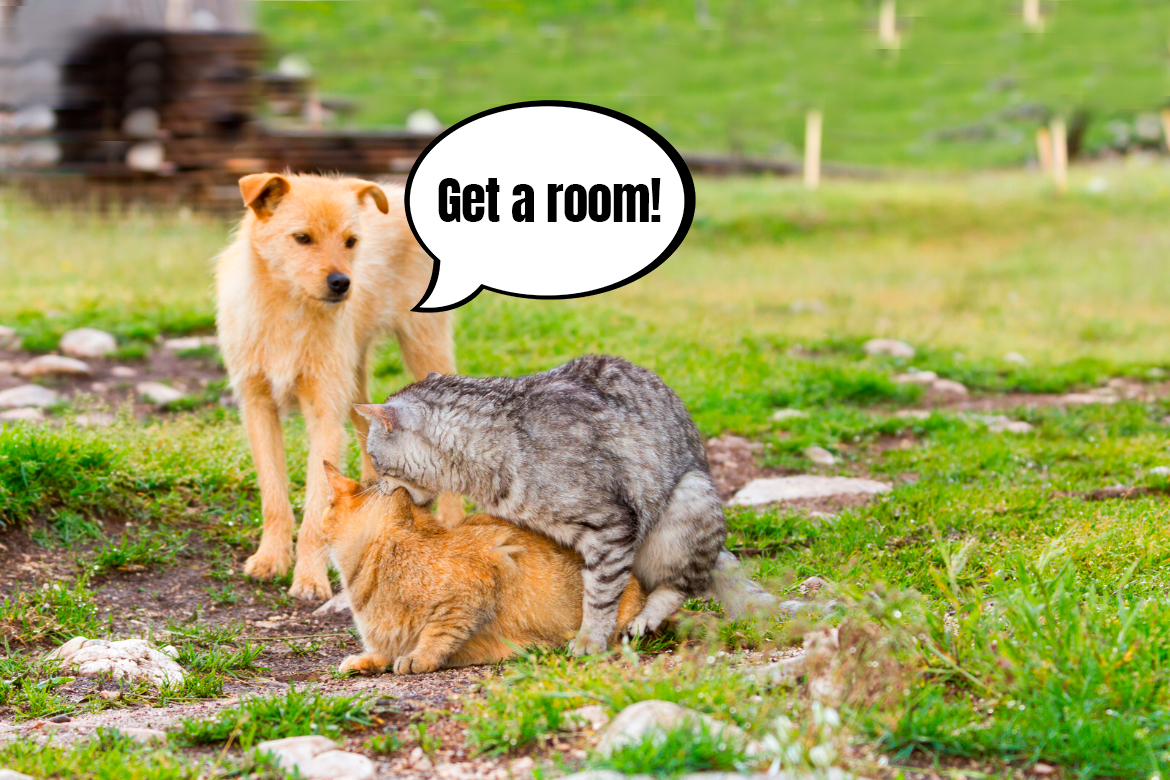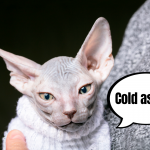The idea for today’s article came to us from our own Kitku Yoda who, at a certain period of his life, decided to mark his position in the family hierarchy by humping on Teddy. His behaviour was a little surprising to us – after all Teddy and Kitku Yoda are both boys and both neutered. Looking for an answer to “why?” gave a few possible causes, but one of them was Kitku Yoda wanting to show who wears pants in this house – at least that’s what we think and we will definitely bring this up with our behaviourist. But is it the only reason?
How spaying and neutering affects male and female cats
Spaying and neutering cats is the best way of preventing unplanned breeding, but also a way of eliminating some unwanted behaviours like spraying and marking the territory with urine. It’s no surprise that it’s recommended for all cats who are not being used by registered breeders. It’s not good, however, to assume that castration removes all sex hormones from the cat’s body alongside with some behaviours that they can cause.
Neutering doesn’t mean that a male cat stops being male, and a female cat – female. It’s normal that even after a successful procedure, cats will still show some signs of sexual behaviours. Best example? Humping, sitting on and any attempts of mating with other cats or even inanimate objects! You surely recognise some dogs who can hump nearly anything? Pillows, human legs, plush toys? Though it’s rare with cats, it still happens sometimes.
Humping is completely normal
Humping associated with mating is completely normal for cats and the behaviour has a lot to do with the hormones that float around in the cat’s body. For male, intact cats, humping on a female allows them to breed and continue their bloodline, but for both intact and neutered males humping can be also directed at other male cats and have nothing to do with breeding behaviours. Humping or other attempts of getting “close” between two male cats is an act of building social hierarchy in their home environment. A form of social pressure in the cat group. A cat behaviourist will tell you the truth and it’s really a good idea to consult with them about all atypical behaviours of our furry friends – it’s always an individual case and you can’t put all cats in one bag.
The reasons neutered cats may hump
An intact male cat uses humping to relieve some of his natural needs caused by the hormones in his body. But because the humping mechanism itself leads to a sense of relief, cats can associate it with the feeling and use it in other situations as well, not necessarily linked to breeding or building hierarchy and asserting dominance in the group.
Cats can hump other cats or objects in their surroundings when they feel stressed (e.g. about some changes in their environment), frustrated or when they are bored and looking for something to do or a way to catch their hooman’s attention. Humping can be also linked to health issues with the urinary tract, so if there are any worries, it’s worth checking it out with a vet and a behaviourist.
Case study: Kitku Yoda and Teddy
You may ask, fabCats, how is it going with our boys then? Generally it seems that Teddy couldn’t care less. He’s not bothered by Kitku Yoda’s behaviour at all and he patiently waits for Yoda to finish his game. At the beginning we often would observe their interactions carefully and wonder if we should react or not, but besides Yoda stomping on Teddy nothing else was happening: no fighting, no biting, no scratching. Teddy handles it just fine, often just laying there and waiting. He’s not scared or irritated by Yoda’s shenanigans – he just allows his brother to feel like the leader of the home kingdom for once.
And when does it all happen? From what we’ve observed, Kitku Yoda humps Teddy when he feels good and thinks he rules. He becomes the rooster and stomps on Teddy as if his brother was a hen. If that’s how you want to do your business, gentleman – it’s not our place to say otherwise! But to be sure we have a behaviourist in a paw’s reach and we will be consulting his rooster-like behaviours with them.
How should you react?
If the cat’s behaviour isn’t harmful, we shouldn’t take immediate actions that could scare the cat. Shooing them away from their cat buddy doesn’t change anything and won’t teach the cat to stop the behaviour – they won’t associate our negative reaction with what they’ve been doing. Instead, it’s worth building up positive associations and distractions – by grabbing a toy you can get your cat’s attention and ease some frustrations with success, without ruining your hooman-cat relationship.
Watching both cats’ behaviour is good practice as well. If there’s no aggression or fear and giving up between them, it’s most probable that one of them is trying to show their role in the group. Unless it comes to fights for power and the behaviour gets stronger, let’s stay, as cat Guardians, in the role of an observer. If the problem doesn’t stop or it worries you in any way, it’s good to check if there’s no underlying health issues (e.g. with the urinary tract) and then look for help with a trained cat behaviourist.
And how are relationships within your cat groups, dear fabCats? Are there acts of dominance or is everyone living in harmony and cat democracy? As always, we’re waiting on your stories in our comments section.




